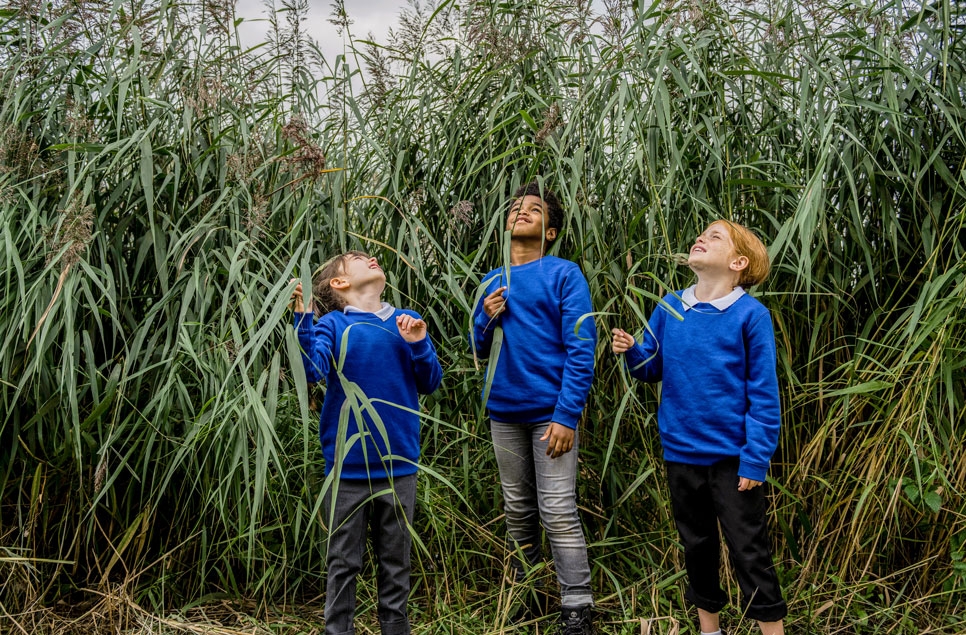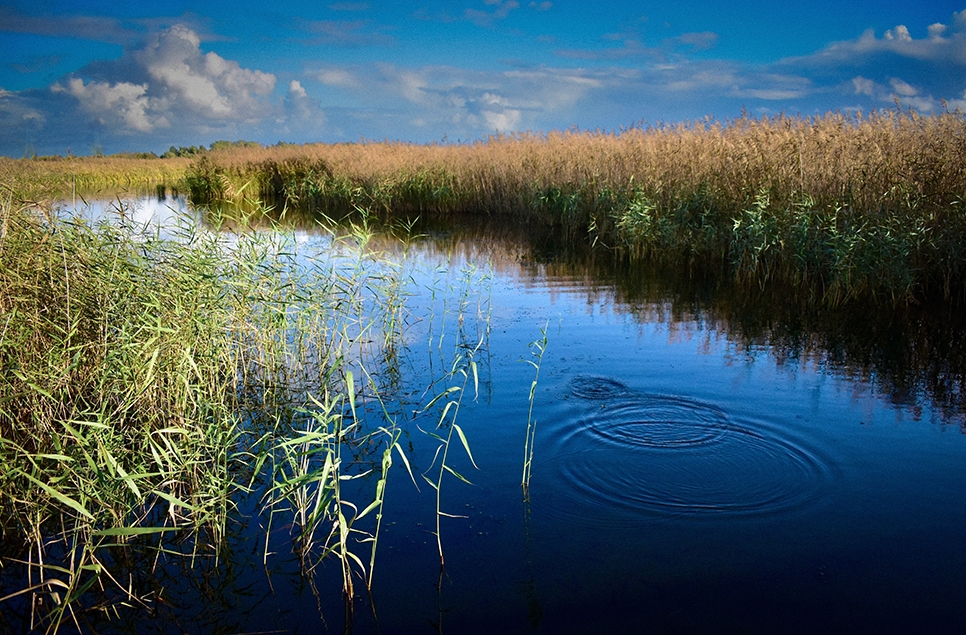More indoor and outdoor nature-themed family activities to try during the school holidays
The summer holidays are reaching their end, and come rain or shine you might be looking to nature to keep your young adventurers entertained. Running out of ideas? Your local wetland is the perfect playground.
The summer holidays are reaching their end, and with warmer weather on the horizon you might be looking to nature to keep your young adventurers entertained. Running out of ideas? Your local wetland is the perfect playground.
The rain is no reason not to get outside, especially in summer when it's nice and warm out. Besides, in the UK you often can't rely on the weather. Even so, sometimes it's nice to bring the outdoors inside, or perhaps you've been asked to isolate. So bearing that in mind, here are some of our favourite family activities to try, whether you’re exploring our wetlands or becoming an indoor explorer.
At many of our wetland sites, we've provided a range of activities to get everyone away from their screens, from underwater worlds to discovery trails and arts and crafts. You can find out more about getting back to nature at our wetlands this summer here.

Outdoor fun
1. Become an undercover birdwatcher
Birds can be a bit shy, so why not take your birdwatching to the next level by watching from a hide? Going incognito like a pro wildlife photographer is a great way to get closer to nature without disturbing it. Staying still and observing isn’t always easy, so when you visit a bird hide you’ll have a great place to practice being quiet, not moving and just taking in as much of the world around you as possible. Many birders say that watching birds gives them a wonderful chance to focus and be really present in the moment – regardless of how many species they actually spot.
There's lots to see and experience at our wetland centres, with birds on passage migration or fattening up for the winter.
To make your own hide at home, just follow our simple step by step guide.
You don’t need to be able to ID birds to get a lot out of watching them, but if you find it fun to be able to put a name to a beak, our common garden birds guide might help.
2. Make a LEGO! bird table
So you’ve got your hide… but the birds are few and far between. One thing we do at our wetland centres is to provide food and shelter, attracting more birds to the safe wetland reserve. If you want to encourage more birds to your garden or outside your window, one way to do this is to provide a source of food and water. This tutorial combines two of our favourite things in one, helping nature and playing with LEGO!
How to make a lego bird table: watch the video

3. Go pond dipping
The cool, green waters of the pond are incredibly tempting on a hot summers day, with countless little creatures swimming around beneath the surface just waiting to be discovered. There's always something to be discovered, from the shiny, slippery beauty of a newt to the formidable dragonfly larvae, and children often make their first wetland discovery via a pond dip.
We run pond-dipping sessions at many of our centres, so please check what's on at your local wetland centre to see if there are sessions on. You can also pond dip at home, and here are some of our top tips to know before you go.

4. Look at feathers
One of the most incredible things about birds is their feathers, which only get more fascinating the more you look and learn about them. Why not head out to your local wetland and see what kind of feathers you can find there? Just be careful not to get too close to any nesting birds.

Feather colours are formed by either pigment or structure, or both. Structural colours, such as the blue of a kingfisher or the iridescence of a lapwing, are produced by the bending of the light through the feather. If you hold it up to the light, it will appear brown. Look really closely at a feather, and you’ll see how it’s made of thousands of individual strands, creating so many different patterns and shapes. So next time you find one, why not take a much closer look?
5. Make a bug hotel
Many of the garden birds we know and recognise are insectivorous, which means they love to dine on a juicy creepy crawly. Did you know that many flying insects actually start life underwater, and they’re reliant on wetlands for the majority of their lives?
Make your own bug hotel to provide homes for mini-beasts where you live, and give an old juice or milk carton a whole new lease of life while you’re doing it – a double win for nature.
Invertebrates are often underrated, but they are a vital part of nature, providing a source of food for other animals, helping to pollinate plants and recycling nutrients back into the soil. Birds, bats and amphibians all rely on mini-beasts as a food source, whether they’re fattening up after arriving back from a long migration, or emerging from hibernation and getting ready for the breeding season.

Outdoor craft kits
All of our outdoor craft kits are designed to kickstart a passion for nature and satisfy curious minds.
Browse craft kitsIndoor activities
1. Draw what’s outside your window
Tired of looking out at the same view every day? Maybe it’s time to look at it in a whole new light. This fun drawing activity gets you to look – really look – out your window, and draw what you see there. It can be as accurate or as expressive as you like, and if you can convey a sense of emotion through your picture then you’re well on your way to creating art. Can you inject new life into the view through your markings on the paper, through your use of colour and texture? What wildlife is out there, going about its day? What sounds can you hear, how does this influence your creation?
2. Take one of our duck quizzes
Summer is one of the hardest times to identify ducks, as the males moult all their shiny, colourful plumage at once so they can't fly. To offer some protection from predators, they appear in more muted, neutral tones. This makes them much harder to identify from the females during summer. They then regrow their flight feathers, ready to look brand new when the migration and breeding seasons come round again. Although it's hard to tell the difference between ducks at this time, there are some tell-tale giveaway signs. Take our fun quizzes and see if you can identify our male ducks in their eclipse plumage, or maybe try your hand at figuring out who our subtler-feathered but no less striking female ducks are.

3. Make a nature mobile
This activity combines both indoor and outdoor fun. First, go on a nature hunt (this could be a back garden, park or your local wetland) and gather up some lightweight items, as well as a good stick. Then, create your mobile – no two will be the same and it’s a lovely way to remember your favourite places with all your senses when you’re at home.

4. Create some art from nature
One of the most fun ways to get creative is to play around making art from different objects. No need for pens and pencils, let nature help you create an artwork that engages all the senses. You can use some of the objects you didn't use for the nature mobile, or think up an idea ahead of time and find what you need. Just remember not to disturb anything or remove anything living from the natural environment.
The picture below shows some of the fun art that children made at a Wetland Explorers session at WWT Llanelli. We think you'll agree that they bring something different to your usual nature drawing!

5. Make an origami frog
In our latest origami tutorial, find out how to make a simple jumping frog. You could even draw a series of beautiful lily pads on a pond for them to jump across. All you need is a square piece of paper, and some patience to practice those folding skills. Once you’ve worked out the technique, it’s easy.

Summer at our wetland centres
We have plenty more nature-themed boredom busters to keep everyone entertained, away from screens and out in the fresh air at our wetland centres.
Find a centre


